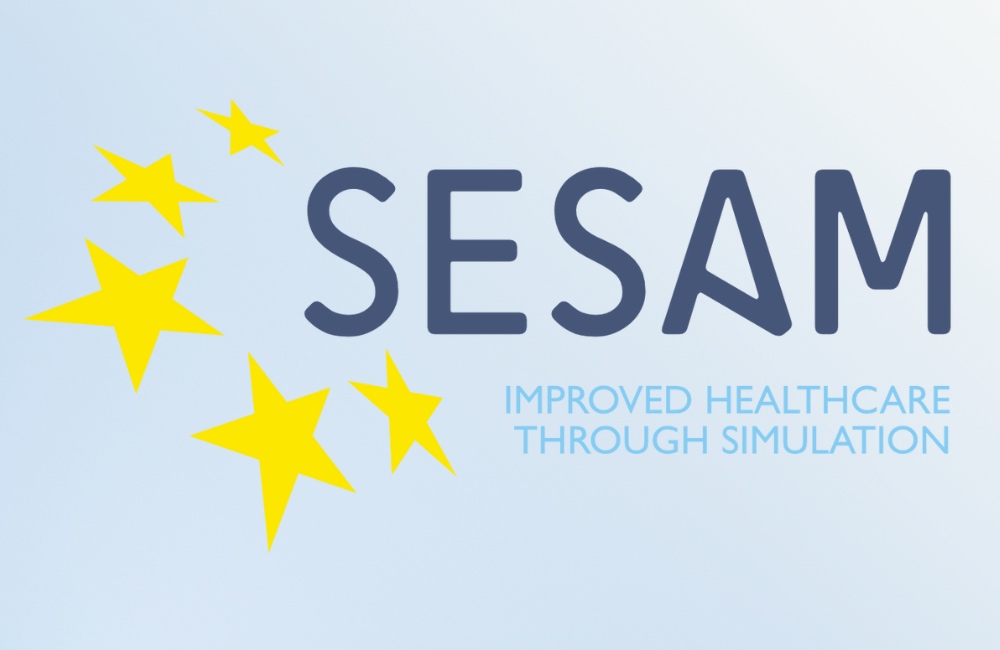Simulation Champions around the world are sharing their secrets for success in medical simulation! Today we take a look at some of the online help captured by some of our friends on topics ranging from Healthcare Simulation Technology Specialist Guides, Patient Safety and Moulage Guides to Pearls for Debriefing tips! Do you have writing to share? Email us and let us know so we can share it too! Let’s check out some of the helpful work from other simulation champions here today.
Patient Safety / Simulation and Ergonomics (by Mark Hellaby): Here to challenge, discuss, enthuse and learn about all things Patient Safety, Clinical Simulation and Ergonomics. Mark is passionate about patient safety and interested in how we can improve human performance through understanding how humans think, act and work together. He wants to predict errors before they occur and ensure systems are built around the humans. Interested in how TEL and TEC can assist us in doing the right things.
Mark’s latest work entitled “Patient Safety, Simulation and Human Factors Part II: The applications of simulation” shares how Simulation can be used to really understand the needs of the user to test the development of new systems, processes, building designs, pathways, roles indeed anything. Although this is now the norm for a lot of our medical equipment design it is less routine for processes designed within the NHS either at an organizational, regional or national level be that pathways, algorithms, job roles, IT or building design. Working with individuals who understand how humans work and the limitation of the human machine (physical and cognitive) can allow these processes to be developed appropriately from day one (pro-active design) and this can and does involve simulation.
EMCrit Project: Online Medical Education on Emergency Department (ED) Critical Care, Trauma, and Resuscitation: EMCrit is devoted to Maximally Aggressive Care: Maximally Aggressive Curative Care and Maximally Aggressive Palliative Care To that end, they bring the best evidence-based information from the fields of critical care, resuscitation, and trauma and translate it for bedside use in the Emergency Department (ED) and the Intensive Care Unit (ICU).
Awesome Find: “Podcast 196 – Having a Vomit SALAD with Dr. Jim DuCanto” – Airway Management Techniques during Massive Regurgitation, Emesis, or Bleeding. Friend to the show, Jim DuCanto has been obsessed with SALAD. Not the leafy greens delicately touched with a tart emulsion, but with Suction Assisted Laryngoscopy and Airway Decontamination (SALAD). Jim DuCanto, MD is an anesthesiologist extraordinaire with a constant drive to perfect new airway techniques and document them on video along the way.
thesimtech (by Andy Howes): Based on continuing contributions from the simulation community, thesimtech’s goal is to become an ‘online hub’ for sharing ideas and information for all things related to healthcare simulation. Here you will find scenarios, a/v high quality images for simulation, moulage tips, document templates, links, news and fun!
Andy’s latest content newsletter covers a pediatric scenario resources, an ultrasound simulator app, Simulare Medical’s rhinoplasty surgical trainers, hilarious simulation video from Cedars-Sinai Women’s Guild Simulation Center, and the Level 3 Healthcare blog.
Healthcare Sim Blog (by Barry M. Robinson): This is Barry’s personal website for simulation in healthcare. It is slightly different from other simulation sites since it highlights his own particular interests in this subject. He now has an excellent free guide for simulation operations specialists he calls “the Handbook for Healthcare Simulation Operations Specialists” which is very helpful! You can also download the latest edition of his Casualty Simulation Techniques Guide, free-of-charge!
Barry’s latest work is entitled “Low-cost open source computing in healthcare simulation” which is based on a presentation he gave at INACSL which speaks about the Raspberry Pi Zero W running Linux Raspbian Lite OS that is an open source hardware running an open source operating system. The device embodies the basics of open source concepts; a low-price with flexibility and the backing of a large, world-wide user/developer/creator community. At just $10 U.S. this computer has built-in WiFi and can be configured as an access point which lets you operate your trainer or mannequin via a webpage. If you would like to configure your own Raspberry Pi Zero W as an access point, he has published detailed and easy-to-follow directions!
Simulating Healthcare (by Dr. Paul Phrampus): Simulating Healthcare is a blog discussing topics related to healthcare simulation. Simulation is an important method for the training and assessment of students, physicians, nurses and all healthcare provider disciplines. Medical Simulation is an important part of the future for helping to improve quality and safety in healthcare. The blog is written by Dr. Paul E. Phrampus, FACEP FSSH is the Director of the Peter M. Winter Institute for Simulation, Education and Research (WISER). He is a Professor in the Departments of Emergency Medicine and Anesthesiology of the University Of Pittsburgh School Of Medicine. He is Vice Chair for Quality and Patient Safety in the Department of Emergency Medicine and Medical Director for Patient Safety at UPMC.
Paul’s latest article “Five Pearls for Debriefing” covers the Top 5 Considerations for Clinical Educators utilizing Simulation in Healthcare specific to the unique skillset of debriefing. He covers Learner Readiness, Listening and Understanding Learners, Covering both the bad and the good, Maintaining Focus, and How to Find the Take Home Points. He shares that “every simulation has a plethora of opportunities for learning. It is the job of the debriefer to ensure that the primary learning objectives of the simulation are covered. During complicated cases or cases with multiple learning objectives it is possible to cover a lot of ground along with many topics and facts during the time when you are analyzing the learners grasp of the content.”
Step by Step Guide to Creating a Resuscitative Hysterotomy Manikin (by: Jim Entwistle): Learning from the Greath North Air Ambulance group in the UK, here Jim shares this blog post video and guide of their simulated resuscitative hysterotomy manikin, which has been very popular on social media! The inspiration came from Sydney HEMS’ blog on how to make an escheratomy manikin using a yoga mat and duct tape to create the layers you have to cut through. Even they were surprised how well it went! All you will need for this DIY manikin is body buff sponge, large watertight plastic bag, two pots of blackcurrant jelly, your child’s favorite doll, red food coloring, string, pink or red duct tape!
Of course, to stay up to date with the latest healthcare simulation blogs one can always sign up for HealthySimulation.com‘s free email newsletter!









